Small pilot spray dryers have become indispensable tools in various industries due to their versatility and efficiency. In this article, we'll delve into the world of lab scale spray dryer, their key features, applications, and benefits. From understanding the technology behind these innovative machines to discovering their real-world applications, we aim to provide a comprehensive guide for anyone interested in this equipment.
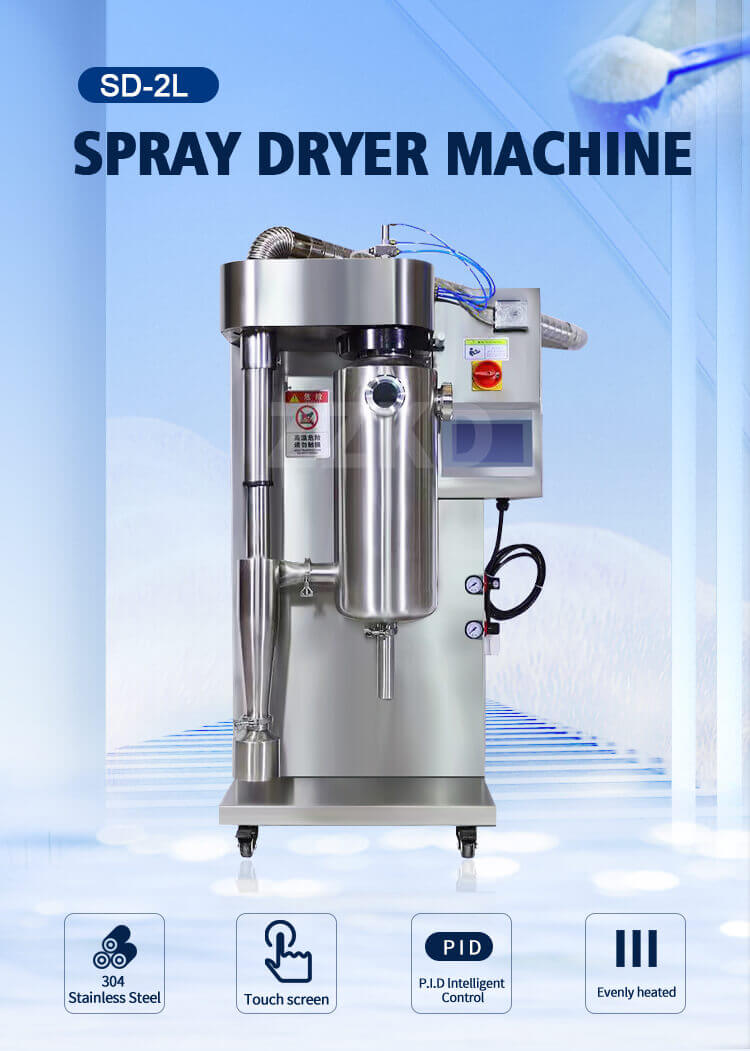
1. The Small Pilot Spray Dryer: An Overview
Small pilot spray dryers, as the name suggests, are compact versions of their larger industrial counterparts. These devices are designed for research and development purposes, offering a scaled-down version of the spray drying process. The technology involved in these machines is fascinating, as they enable the transformation of liquid substances into fine powder through a series of intricate steps.
Small pilot spray dryers are characterized by their modest size, which makes them ideal for laboratories and small-scale production facilities. They typically consist of a drying chamber, nozzle system, and heating mechanism, all designed to work in harmony and produce a fine, dry powder from a liquid feed.
2. The Science Behind Small Pilot Spray Dryers
Understanding the inner workings of small pilot spray dryers is crucial for maximizing their efficiency. The primary objective of this equipment is to atomize a liquid feed into tiny droplets and then rapidly evaporate the solvent to leave behind dry particles. This process involves several key steps:
2.1. Atomization of Liquid Feed
The heart of a small pilot spray dryer lies in its nozzle system, responsible for breaking down the liquid feed into tiny droplets. This atomization process is essential for achieving the desired powder characteristics.
2.2. Drying Chamber
Once the liquid is atomized, it enters the drying chamber. In this chamber, hot air is introduced, causing rapid evaporation of the solvent. The remaining solid particles are collected and discharged as a dry powder.
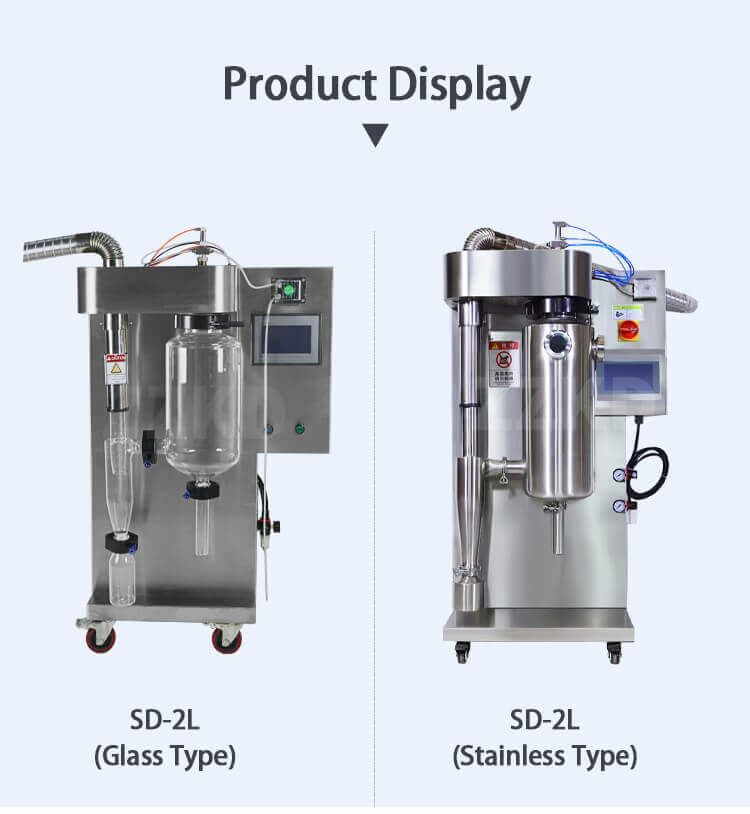
2.3. Particle Collection
Effective separation of the dried particles from the air is crucial. Small pilot spray dryers are equipped with cyclone separators or other collection mechanisms to ensure efficient powder recovery.
3. Applications of Small Pilot Spray Dryers
Small pilot spray dryers find applications in various industries, thanks to their versatility and scalability. Here are some key areas where these machines are widely used:
3.1. Pharmaceutical Research
In pharmaceutical research, small pilot spray dryers play a pivotal role in drug formulation development. They are used to transform drug solutions into easily dispersible powders, ensuring precise dosage and effective drug delivery.
3.2. Food and Beverage Industry
The food and beverage industry relies on small pilot spray dryers to create powdered ingredients, such as milk powder, coffee, and flavors. These machines help maintain product consistency and prolong shelf life.
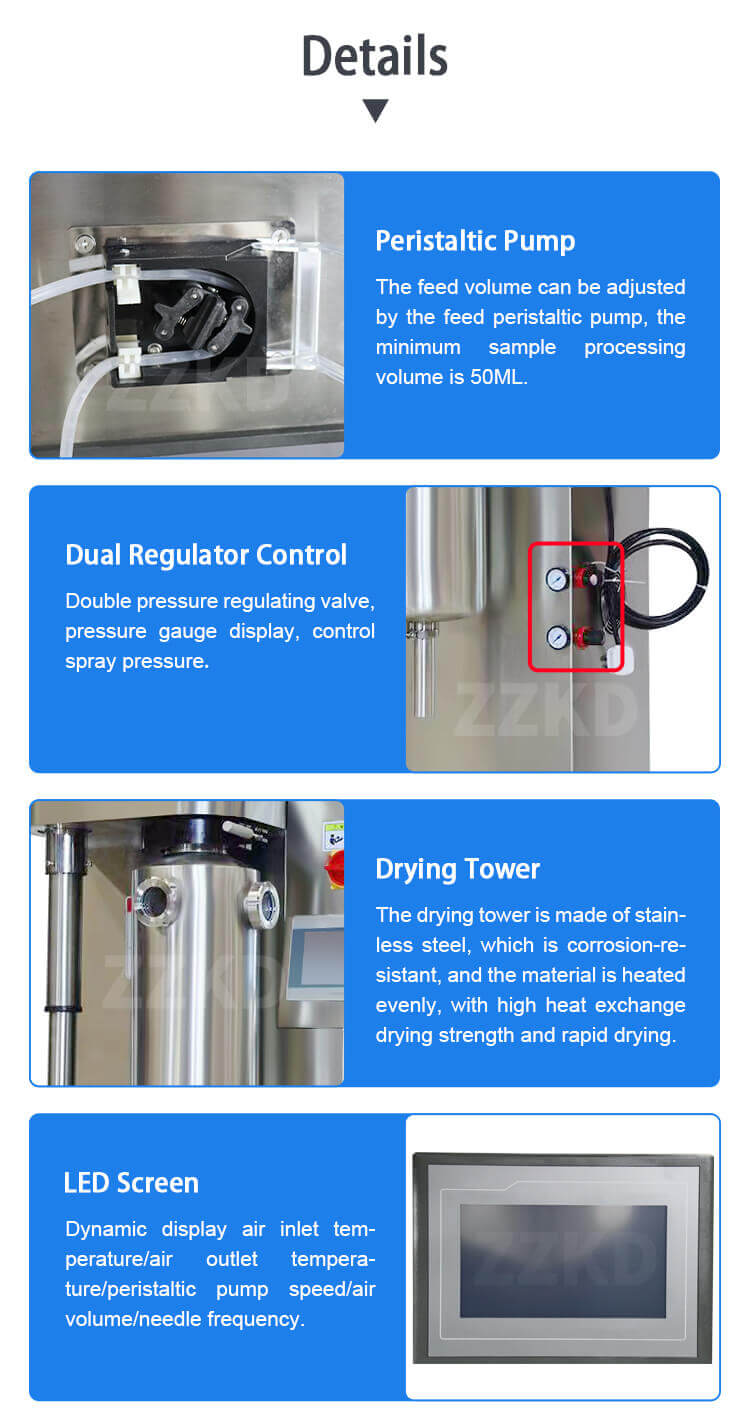
3.3. Chemical Processing
Small pilot spray dryers are vital in the chemical industry for producing catalysts, pigments, and specialty chemicals. Their ability to handle a wide range of feed materials makes them invaluable for research and development.
3.4. Environmental Remediation
In environmental applications, these dryers are used to convert wastewater and sludge into dry, easy-to-handle materials. This reduces the volume of waste and facilitates disposal.
3.5. Nanoparticle Synthesis
Researchers and scientists utilize small pilot spray dryers to create nanoparticles for various applications, including nanomedicine, electronics, and materials science.
4. Advantages of Small Pilot Spray Dryers
Small pilot spray dryers offer numerous advantages that contribute to their widespread use:
4.1. Cost-Effective Research
Researchers and product developers can perform experiments and feasibility studies on a smaller scale, reducing costs associated with materials and energy consumption.
4.2. Speed and Efficiency
These machines enable rapid drying and particle formation, saving valuable time in the development and optimization of products.
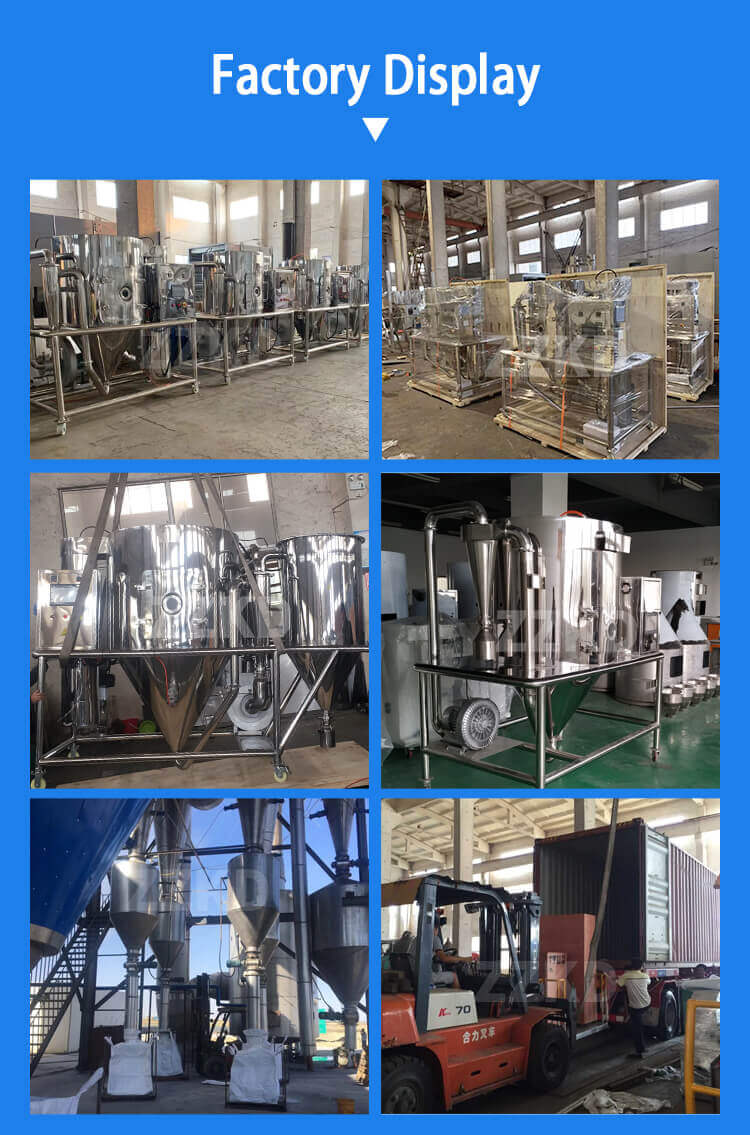
4.3. Scale-Up Potential
Data obtained from small pilot spray dryers can be used to scale up production to larger industrial spray dryers with confidence.
4.4. Precise Control
Operators can fine-tune process parameters to achieve specific powder characteristics, ensuring consistency in the final product.
5. Selecting the Right Small Pilot Spray Dryer
When choosing a small pilot spray dryer for your specific application, it's essential to consider factors such as the type of feed material, desired powder properties, and available space. Additionally, the equipment's capacity and control options should align with your research or production needs.
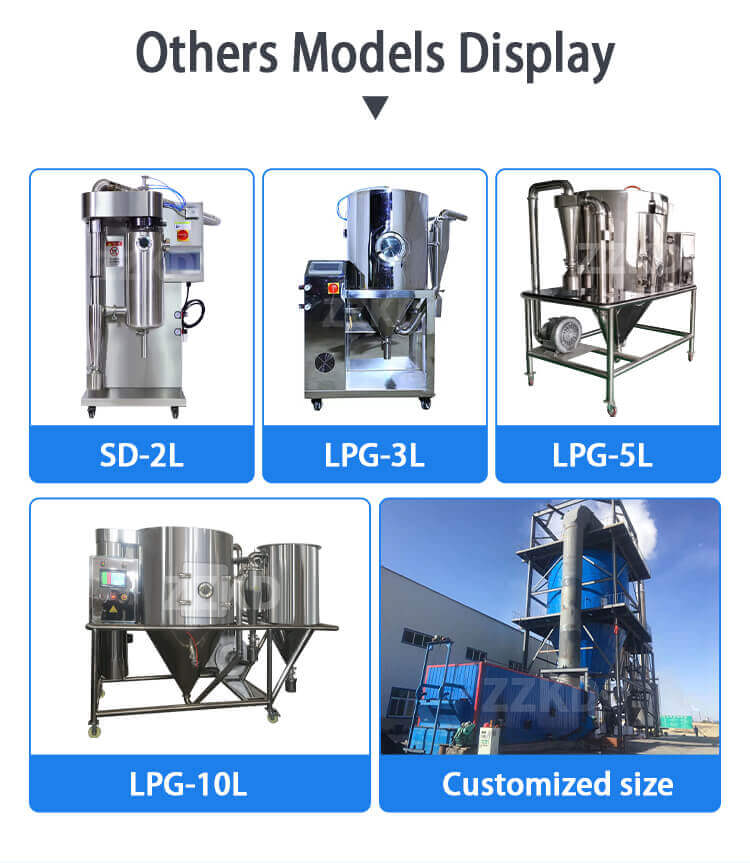
6. Conclusion
In conclusion, small pilot spray dryers are remarkable pieces of equipment with a wide range of applications. Their ability to efficiently transform liquid feeds into fine powders makes them indispensable in industries like pharmaceuticals, food, chemicals, and more. Understanding the science behind their operation and the advantages they offer can help researchers and developers make informed decisions when incorporating small pilot spray dryers into their processes. Whether you're working in a laboratory or a small-scale production facility, these versatile machines can drive innovation and product development.

 Products
Products

























